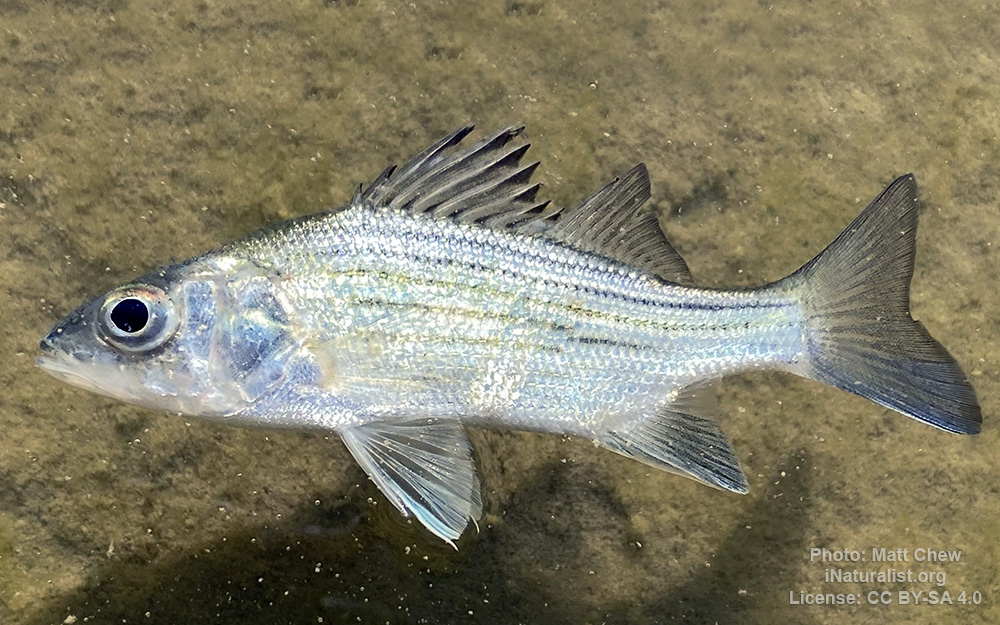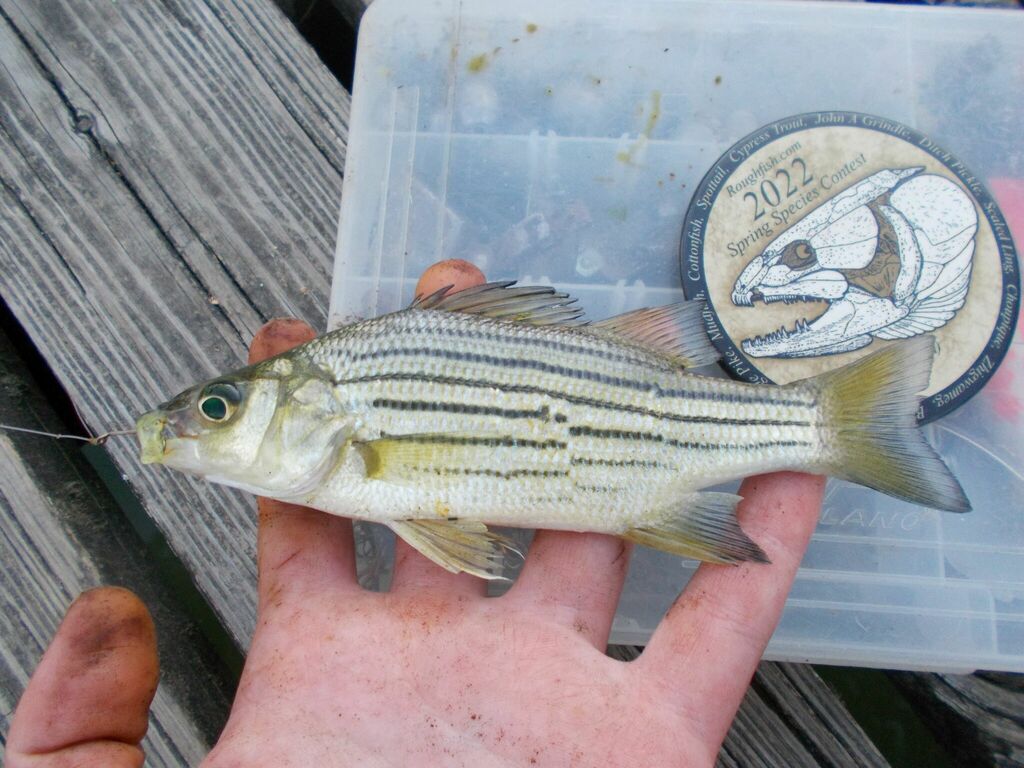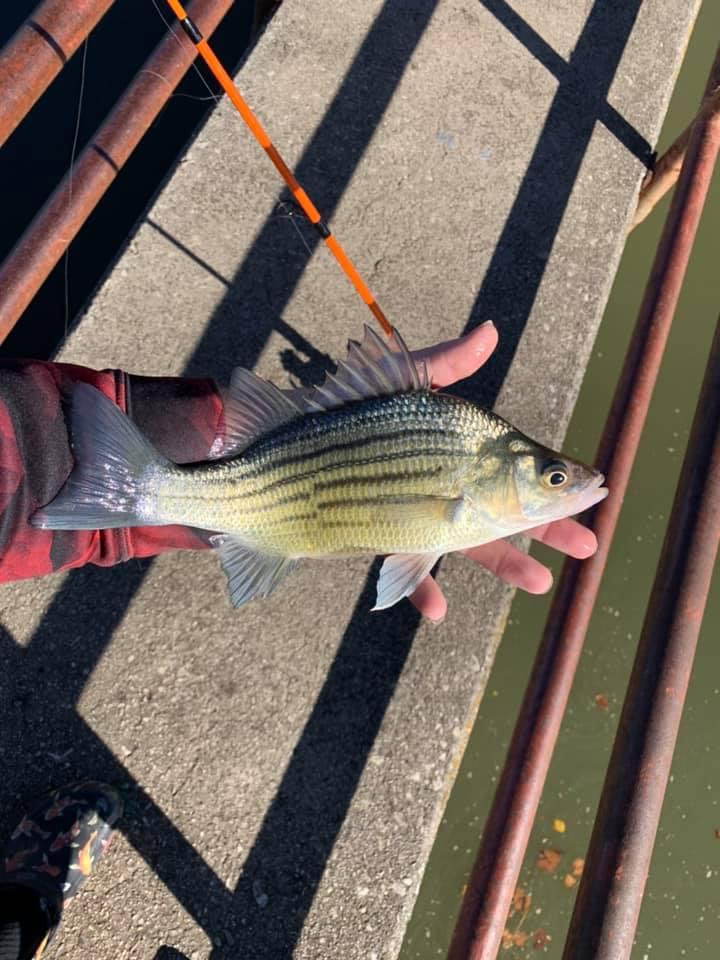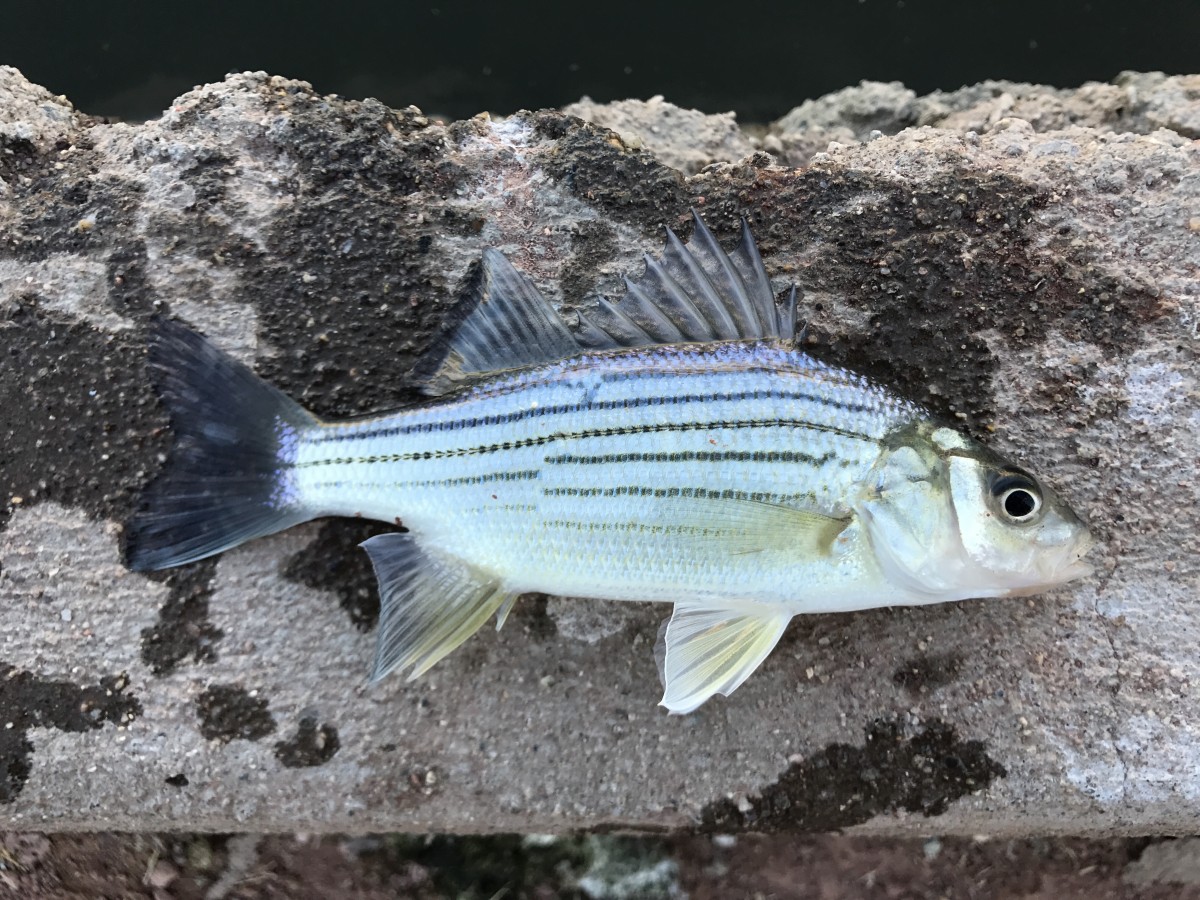Yellow bass
(Morone mississippiensis)

Classification
General data
Morone mississippiensis, commonly known as the yellow bass, is a member of the family Moronidae.
This species is a deep bodied fish that possesses five to seven dark stripes laterally along the sides, the lowest few of these are often broken or disrupted anterior to the origin of the anal fin.
This species is somewhat similar to two other species in the family Moronidae, the white bass and the striped bass. The yellow bass is distinguishable from both of these species by having the offset lateral stripes above the anal fin and from not possessing tooth patches on the tongue. The yellow bass differs further from the white bass by having nine to ten anal rays in comparison to eleven or thirteen. The back of the fish is usually dark olive-green, and the abdomen and sides are often a silvery yellow.
Diet
Food exploited by young yellow bass include small invertebrates including copepods and aquatic insects. The juvenile yellow bass feeds almost exclusively on aquatic insects and crustaceans, and once they reach adulthood they feed primarily on other small fishes; the rest of their diet consists of small crustaceans.
Habitat and distribution
Yellow bass may be found in somewhat clear waters of the Mississippi River from Minnesota to Louisiana and may also be found in the Trinity River and the Tennessee River. The largest concentrations are in Lake Chicot, The Horseshoe Lake in Crittenden County, and The Mallard Lake in Mississippi County. The yellow bass can also be found in lakes surrounding these rivers, especially in areas with dense vegetation and low turbidity.













